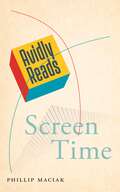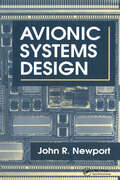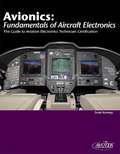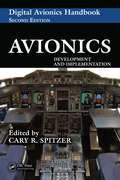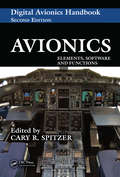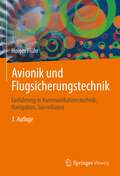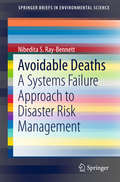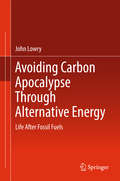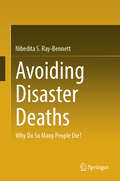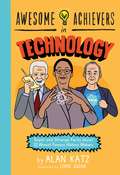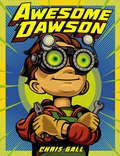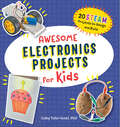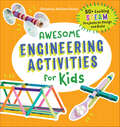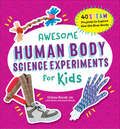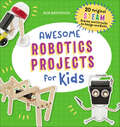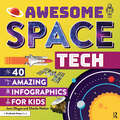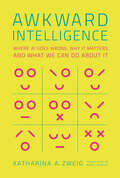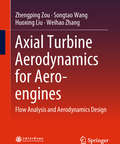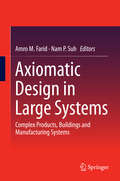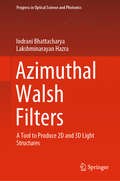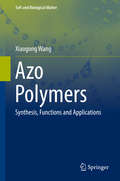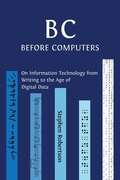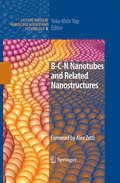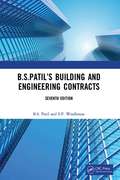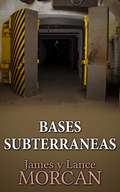- Table View
- List View
Avidly Reads Screen Time
by Phillip MaciakWhat happens when screen time is all the time?In the early 1990s, the phrase “screen time” emerged to scare parents about the dangers of too much TV for kids. Screen time was something to fret over, police, and judge in a low-grade moral panic. Now, “screen time” has become a metric not only for good parenting, but for our adult lives as well. There’s even an app for it! In the streaming era—and with streaming made nearly ubiquitous during COVID-19—almost every aspect of our day is mediated by these bright surfaces. Whether it was ever the real villain in the first place, or merely a convenient proxy for unaddressed familial, social, and institutional failures, screen time is now all the time.Avidly Reads Screen Time is a funny, insightful work of cultural criticism and history about how we define screens, and how they now define us. From Mad Men to iCarly, Vine to FaceTime, binge-watching to doom-scrolling, Phillip Maciak leads us on a sometimes heartwarming, sometimes harrowing tour of the media that brings us together and tears us apart.
Avionic Systems Design
by JohnR. NewportAvionic Systems Design presents an engineering look at the impact of emerging policies - such as joint service programs and commercial co-developments - designed to broaden market sectors for real-time, embedded systems . It also touches on the different review and specification practices of DoD, NASA, and FAA.The topics cover a complete how to overview of the design process, including trade studies, detailed design, and formal reviews. In addition, the discussion links design decisions to a theoretical basis, including architecture integration strategy and communication models. The book also includes performance measurement analysis, interpretation of results, formulation of benchmarks, and numerous examples. Finally, it provides examples of the strategies and effects of requirements analysis and validation. An appendix offers an extensive list of acronyms.
Avionics-fundamentals Of Aircraft Electronics: The Guide To Aviation Electronics Technician Certification
by Scott KenneyInterested in a career in avionics? Avionics: The Fundamentals of Aircraft Electronics will help you develop the core electronics knowledge you need to set your career on the right track. This book is volume one in the Avotek Avionics Series. It's easy to read text combined with comprehensible illustrations make this a great initial course of study for any avionics program or individual desiring to gain avionics knowledge.
Avionics: Development and Implementation (The Avionics Handbook, Second Edition)
by Cary R. SpitzerRenamed to reflect the increased role of digital electronics in modern flight control systems, Cary Spitzer's industry-standard Digital Avionics Handbook, Second Edition is available in two comprehensive volumes designed to provide focused coverage for specialists working in different areas of avionics development. The second installment, Avionics: Development and Implementation explores the practical side of avionics. The book examines such topics as modeling and simulation, electronic hardware reliability, certification, fault tolerance, and several examples of real-world applications. New chapters discuss RTCA DO-297/EUROCAE ED-124 integrated modular avionics development and the Genesis platform.
Avionics: Elements, Software and Functions (The Avionics Handbook, Second Edition)
by Cary R. SpitzerRenamed to reflect the increased role of digital electronics in modern flight control systems, Cary Spitzer's industry-standard Digital Avionics Handbook, Second Edition is available in two comprehensive volumes designed to provide focused coverage for specialists working in different areas of avionics development. The first installment, Avionics: Elements, Software, and Functions covers the building blocks and enabling technologies behind modern avionics systems. It discusses data buses, displays, human factors, standards, and flight systems in detail and includes new chapters on the Time-Triggered Protocol (TTP), ARINC specification 653, communications, and vehicle health management systems.
Avionik und Flugsicherungstechnik: Einführung in Kommunikationstechnik, Navigation, Surveillance
by Holger FlührDas Buch spannt den Bogen von modernen Technologien zur Flugsicherung über die wesentlichen Avioniksysteme (Kommunikation, Navigation, Surveillance) sowie die bordautonome Energieversorgung bis hin zur Integration der Systeme im Flugzeug. Der Autor legt Wert auf die Einbindung der vorgestellten Funktionsblöcke in das System Flugzeug bzw. in das System Luftfahrt: Er behandelt sowohl Funktion und Aufbau der Teilsysteme als auch deren Einbindung in die Avionikumgebung des Flugzeugs und in die Bodeninfrastruktur. Ein weiteres Thema sind zulassungsspezifische Fragestellungen. Zum Verständnis notwendige nachrichtentechnische Kenntnisse werden komprimiert wiederholt. Der Lernerfolg wird durch Definition von Lernzielen, Verständnisfragen und Beispielaufgaben sichergestellt. Die 2., komplett durchgesehene Auflage erweitert vor allem die Ausführungen zur Zuverlässigkeit von Flugzeugsystemen und lässt aktuelle Entwicklungen wie etwa SESAR in den Text einfließen.
Avoidable Deaths
by Nibedita S. Ray-BennettThis book addresses one of the most fundamental questions of the 21st century: why deaths continue to occur in natural disasters despite the tremendous advancements in disaster management science and weather forecasting systems, increased sophistication of human-built environments and ongoing economic and policy development worldwide. By presenting an interdisciplinary tool for analysing ‘systems failure’, the book provides concrete suggestions on how deaths may be reduced in resource-poor contexts. It goes beyond traditional risk and vulnerability perspectives and demonstrates that deaths in disasters are complex problems that can be solved by adopting a socio-technical perspective to improve current disaster management systems in the developing world. The book is a timely contribution, as it directly addresses Global Target One of the UN’s ‘Sendai Framework for Disaster Risk Reduction’, which has urged 185 UN Member States to reduce disaster mortality by 2030. Further, it offers a valuable resource for students, researchers, policy-makers and practitioners interested in disaster risk reduction, human rights, gender, sociology of risk, crisis and disasters, environmental science, organisation and management studies.
Avoiding Carbon Apocalypse Through Alternative Energy: Life After Fossil Fuels
by John LowryThis important book lays bare the dangers of global warming caused by carbon dioxide emissions stemming from fossil fuel use, and proposes pathways toward mitigation. A discussion of the current main uses of fossil fuels acts as a basis for presenting viable, economically sound alternatives. The author outlines a clear, practical strategy for establishing a carbon-free future by deploying proven policy structures and technologies that are already commercially available.
Avoiding Disaster Deaths: Why Do So Many People Die?
by Nibedita S. Ray-BennettThis book introduces a pathbreaking approach called &‘Avoidable Disaster Deaths&’ (ADD) to reduce disaster deaths. Disaster deaths are the direct and indirect impact of hazards. The &‘Sendai Framework for Disaster Risk Reduction&’ has urged the United Nations Member States to reduce disaster deaths or mortality by 2030. Reducing the number of disaster deaths has become a useful marker for improving disaster risk management. Equally important is knowing how people die, who dies, why they die, and which disaster deaths are &‘avoidable&’ and &‘unavoidable&’. Disaster risk reduction specialists have not fully examined these questions. Built from disaster risk reduction, public health, epidemiology, human geography, risk and crisis management studies, the ADD approach disaggregates disaster deaths into avoidable and unavoidable. Avoidable disaster deaths are preventable, amenable and governance-related. Unavoidable deaths are those that occur annually due to natural causes or poverty-related diseases. In a disaster climate, the emphasis should be on reducing avoidable disaster deaths in a resource-constrained context. Using the context of COVID-19 and the economic lockdown in India, the analytical advantage of this approach is explored. Doing so, the book brings forth human stories whose lives were cut short and introduces novel matrices and dynamic strategies to ascertain the &‘cause and circumstances&’ of avoidable disaster deaths to develop the capacity of disaster and health responders. The book is suitable for students, academics, policy-makers and practitioners interested in disaster risk reduction, human rights, risk and crisis management, environmental science, human geography, Sustainable Development and Sendai Goals. The book is also suitable for passionate citizens who want to capture the number, causes and circumstances of avoidable disaster deaths and take positive action to save lives in their communities. Professor Nibedita S. Ray-Bennett ably presents a novel &‘avoidable disaster deaths&’ approach to disaster risk reduction and management by presenting cogent arguments rooted in solid theory and up to date literature reviews, complemented by a wealth of data and analysis from the Indian Covid 19 experience. The book includes a range of tables and diagrams that crystallise approaches and practices useful for policy makers and practitioners alike. The book is highly informed, well written, accessible, practical and useful, with an optimal mix of strong, well-tested academic theory, and important recommendations that demand serious consideration by all involved and interested in disasters. A spur to action and inspiration. (Professor Michael Petterson, School of Social Sciences, Auckland University of Technology, New Zealand)
Awesome Achievers in Technology: Super and Strange Facts about 12 Almost Famous History Makers (Awesome Achievers)
by Alan Katz Chris JudgePart of a super fun middle grade series, Awesome Achievers in Technology puts the spotlight on lesser-known heroes and their contributions in tech.Everyone has heard the name Steve Jobs, but what about Nolan Bushnell--Jobs's boss before the invention of Apple, and the founder of the first major video game, Pong? Many of the most relevant figures in tech history have remained in the shadows, but not any longer! From Alan Katz's new Awesome Achievers series, Awesome Achievers in Technology gives kids a look behind the scenes at 12 lesser-known inventors whose contributions to tech are personally relevant to their lives today. Each figure is given a traditional biography but is also subject to Katz's unique brand of silliness, with humorous elements such as imagined poems, song lyrics, and diary entries by and about the not-so-famous figure accompanying each bio. Spot illustrations throughout add to the lighthearted and appreciative humor each figure receives. Reluctant readers and budding tech enthusiasts alike will delight in this imaginative and engaging introduction to a new series of laugh out loud biographies.
Awesome Dawson
by Chris GallEVERYTHING CAN BE USED AGAIN! That's Dawson's motto. He collects junk that people throw away and turns it into something STUPENDOUS. But when Dawson uses his skills to create a machine to do his chores for him, he discovers he might have invented something a littletoo. . . AWESOME. Can he stop the rampaging robot before it destroys the entire town? Chris Gall inspires kids to reuse, repurpose, and recycle in this inventive adventure about a boy superhero who turns trash into treasures--and saves the world while he's at it!
Awesome Electronics Projects for Kids: 20 STEAM Projects to Design and Build (Awesome STEAM Activities for Kids)
by Colby Tofel-GrehlElectronics come alive with hands-on activities for kids ages 5 to 10The world of electrical engineering is packed with awesome ways for kids to learn and play! Filled with glowing, buzzing, and spinning fun, this guide to electronics for kids helps them fall in love with science as they explore the mechanics behind everyday devices.Whether it's a light-up birthday card, an automated bubble blower, or an alarm clock, every project features easy-to-find components and simple directions that give kids the guidance they need to build. Expand their learning with explanations of how these electronics for kids connect to larger STEAM ideas!This collection of buildable electronics for kids features:20 fun builds—Introduce the science behind electronics for kids through projects that they can do at home with affordable materials—and a little adult supervision.Educational explanations—Go beyond other electronics books thanks to simple breakdowns of exactly what happened and why, ensuring kids get the most out of each activity.Progressive difficulty—Discover electronics for kids that start simple and get more challenging as they go, helping young learners grow their skills without getting frustrated.Inspire a lifelong love of science (plus technology, engineering, art, and math) with the super fun activities in Awesome Electronics Projects for Kids.
Awesome Engineering Activities for Kids: 50+ Exciting STEAM Projects to Design and Build (Awesome STEAM Activities for Kids)
by Christina Herkert SchulSpark creativity and curiosity with fun engineering activities for kids ages 5 to 10Watch your child's eyes light up as they get excited about engineering, learn how things work, and have tons of fun. Awesome Engineering Activities for Kids is packed with more than 50 fascinating STEAM exercises, complete with step-by-step instructions, colorful pictures, and simple explanations of why the experiments work.This engaging book about engineering for kids includes:Activities kids can do themselves—Make engineering for kids easy and fun with projects like toothpick towers and paper cup phones that use common, inexpensive household materials so they can play and learn anytime.The power of STEAM—Lessons are based in Science, Technology, Engineering, Art, and Math to show kids how these things are everywhere, and help them become better problem solvers and logical thinkers.The basics of engineering—Kids will learn all about engineering with a brief guide to the different types of engineers, an explanation of what they do, and what kids need to know to become one.Unlock the world of engineering for kids with exercises that help them learn, grow, and get creative.
Awesome Human Body Science Experiments for Kids: 40 STEAM Projects to Explore How the Body Works (Awesome STEAM Activities for Kids)
by Orlena Kerek Galen Krek Dante KrekShow kids how the human body works—hands-on experiments for ages 5 to 10The human body is amazing! We use it to move, smell, taste, and speak—but how? Kids will uncover the answers with this book of 40 at-home science experiments. They'll see body systems in action with activities like building a digestive tract from socks and pantyhose, sculpting red blood cells, and making vocal cords out of rubber bands. Get kids thinking like a scientist as they answer questions during each experiment and take notes on what they learn. Best of all, kids will see their knowledge grow as they apply their new skills to progressively more challenging activities. Kid-friendly instructions—Step-by-step guidance and detailed diagrams make these projects easy enough for kids to do with minimal supervision. No special equipment required—These projects use inexpensive, everyday items like cotton balls, glass jars, and vinegar, so kids can get started right away. The S.T.E.A.M. connection—Discover how each activity fits into the world of science, technology, engineering, art, and math. Pick up this book today and explore tons of questions about the human body for kids.
Awesome Robotics Projects for Kids: 20 Original STEAM Robots and Circuits to Design and Build (Awesome STEAM Activities for Kids)
by Bob KatovichBuild your own amazing robots—20 STEAM projects for kids 5 to 10!Get ready to build all kinds of incredible robots—right in your own home! Designed for young robot builders, these do-it-yourself robotics for kids projects will teach you about science, technology, engineering, art, and math (STEAM) as you assemble an amazing collection of real working robots!From scribblebots to two-legged walkers, this book walks you through robotics for kids, one beautifully-photographed project at a time. The robots start out simple and get more advanced as you go, helping you boost your skills (and your confidence) at the same time. Get started today!This exciting guide to robotics for kids includes:20 awesome projects—Rock the world of robotics for kids with nearly two-dozen different designs for bots that glow, draw, walk, climb, and more.Full-color photos—Construction is easy thanks to clear directions and 200 step-by-step pictures that help you build your robot right.Robots in the world—Chapters are divided based on the functions of robots, showing you how they can be used to help in your day-to-day life.Discover one of the most fun ways to get into robotics for kids!
Awesome Space Tech: 40 Amazing Infographics for Kids
by Jennifer Dlugos Charlie HattonSpace may be the "final frontier"—but how do we learn about it, look deeper into it, and live in it? The infographics in this book will rocket you through a universe of powerful telescopes, distant probes, and high-speed spacecraft. Get ready to buzz by comets, land on alien planets, peer into the universe's past, and go where no one (except a handful of rovers and space probes) has gone before! We live in a complicated cosmos, but this book breaks down the complex, the confusing, and the downright kooky to reveal the fascinating details and hidden wonders that are out of this world.Ages 9-12
Awkward Intelligence: Where AI Goes Wrong, Why It Matters, and What We Can Do about It
by Katharina A. ZweigAn expert offers a guide to where we should use artificial intelligence—and where we should not.Before we know it, artificial intelligence (AI) will work its way into every corner of our lives, making decisions about, with, and for us. Is this a good thing? There&’s a tendency to think that machines can be more &“objective&” than humans—can make better decisions about job applicants, for example, or risk assessments. In Awkward Intelligence, AI expert Katharina Zweig offers readers the inside story, explaining how many levers computer and data scientists must pull for AI&’s supposedly objective decision making. She presents the good and the bad: AI is good at processing vast quantities of data that humans cannot—but it&’s bad at making judgments about people. AI is accurate at sifting through billions of websites to offer up the best results for our search queries and it has beaten reigning champions in games of chess and Go. But, drawing on her own research, Zweig shows how inaccurate AI is, for example, at predicting whether someone with a previous conviction will become a repeat offender. It&’s no better than simple guesswork, and yet it&’s used to determine people&’s futures. Zweig introduces readers to the basics of AI and presents a toolkit for designing AI systems. She explains algorithms, big data, and computer intelligence, and how they relate to one another. Finally, she explores the ethics of AI and how we can shape the process. With Awkward Intelligence. Zweig equips us to confront the biggest question concerning AI: where we should use it—and where we should not.
Axial Turbine Aerodynamics for Aero-engines: Flow Analysis and Aerodynamics Design
by Zhengping Zou Songtao Wang Huoxing Liu Weihao ZhangThis book is a monograph on aerodynamics of aero-engine gas turbines focusing on the new progresses on flow mechanism and design methods in the recent 20 years. Starting with basic principles in aerodynamics and thermodynamics, this book systematically expounds the recent research on mechanisms of flows in axial gas turbines, including high pressure and low pressure turbines, inter-turbine ducts and turbine rear frame ducts, and introduces the classical and innovative numerical evaluation methods in different dimensions. This book also summarizes the latest research achievements in the field of gas turbine aerodynamic design and flow control, and the multidisciplinary conjugate problems involved with gas turbines. This book should be helpful for scientific and technical staffs, college teachers, graduate students, and senior college students, who are involved in research and design of gas turbines.
Axiomatic Design in Large Systems: Complex Products, Buildings and Manufacturing Systems
by Amro M. Farid Nam P. SuhThis book provides a synthesis of recent developments in Axiomatic Design theory and its application in large complex systems. Introductory chapters provide concise tutorial materials for graduate students and new practitioners, presenting the fundamentals of Axiomatic Design and relating its key concepts to those of model-based systems engineering. A mathematical exposition of design axioms is also provided. The main body of the book, which represents a concentrated treatment of several applications, is divided into three parts covering work on: complex products; buildings; and manufacturing systems. The book shows how design work in these areas can benefit from the scientific and systematic underpinning provided by Axiomatic Design, and in so doing effectively combines the state of the art in design research with practice. All contributions were written by an international group of leading proponents of Axiomatic Design. The book concludes with a call to action motivating further research into the engineering design of large complex systems.
Azimuthal Walsh Filters: A Tool to Produce 2D and 3D Light Structures (Progress in Optical Science and Photonics #10)
by Indrani Bhattacharya Lakshminarayan HazraThis book explores the possibility of using azimuthal Walsh filters as an effective tool for manipulating far-field diffraction characteristics near the focal plane of rotationally symmetric imaging systems. It discusses the generation and synthesis of azimuthal Walsh filters, and explores the inherent self-similarity presented in various orders of these filters, classifying them into self-similar groups and sub-groups. Further, it demonstrates that azimuthal Walsh filters possess a unique rotational self-similarity exhibited among adjacent orders. Serving as an atlas of diffraction phenomena with pupil functions represented by azimuthal Walsh filters of different orders, this book describes how orthogonality and self-similarity of these filters could be harnessed to sculpture 2D and 3D light distributions near the focus.
Azo Polymers: Synthesis, Functions and Applications (Soft and Biological Matter)
by Xiaogong WangThis book explores functional polymers containing aromatic azo chromophores in side-chain, main-chain and other parts of their structures, known as azo polymers and which share common photoresponsive properties. It focuses on the molecular architecture of azo polymers, the synthetic methods and their most important functions, such as photoinduced birefringence and dichroism, surface-relief-grating (SRG) formation, and light-driven deformation of liquid crystal elastomers. It combines a general survey of the subject and in-depth discussions of each topic, including numerous illustrations, figures, and photographs. Offering a balance between an introduction to the core concepts and a snapshot of hot and emerging topics, it is of interest to graduate students and researchers working in this and related fields. Xiaogong Wang is a Professor at the Department of Chemical Engineering, Tsinghua University, China.
B C, Before Computers: On Information Technology From Writing To The Age Of Digital Data
by Stephen RobertsonThe idea that the digital age has revolutionized our day-to-day experience of the world is nothing new, and has been amply recognized by cultural historians. In contrast, Stephen Robertson's BC: Before Computers is a work which questions the idea that the mid-twentieth century saw a single moment of rupture. It is about all the things that we had to learn, invent, and understand - all the ways we had to evolve our thinking - before we could enter the information technology revolution of the second half of the twentieth century. Its focus ranges from the beginnings of data processing, right back to such originary forms of human technology as the development of writing systems, gathering a whole history of revolutionary moments in the development of information technologies into a single, although not linear narrative. <p><p> Treading the line between philosophy and technical history, Robertson draws on his extensive technical knowledge to produce a text which is both thought-provoking and accessible to a wide range of readers. The book is wide in scope, exploring the development of technologies in such diverse areas as cryptography, visual art and music, and the postal system. Through all this, it does not simply aim to tell the story of computer developments but to show that those developments rely on a long history of humans creating technologies for increasingly sophisticated methods of manipulating information. <p> Through a clear structure and engaging style, it brings together a wealth of informative and conceptual explorations into the history of human technologies, and avoids assumptions about any prior knowledge on the part of the reader. As such, it has the potential to be of interest to the expert and the general reader alike.
B-C-N Nanotubes and Related Nanostructures (Lecture Notes in Nanoscale Science and Technology #6)
by Yoke Khin YapCarbon nanotubes (CNTs) and Boron nitride nanotubes (BNNTs) are part of the so-called B-C-N material system, which includes novel nanostructures of carbon (C), doped-carbon, boron (B), boron nitride (BN), carbon nitride (CNx), boron-carbon nitride (BxCyNz), and boron carbide (BxCy). BNNTs and CNTs are structurally similar and share extraordinary mechanical properties, but they differ in chemical, biological, optical, and electrical properties. Therefore, hybrid nanotubes constructed of B, C, N elements are expected to form a new class of nanotubes with tunable properties between those of CNTs and BNNTs. In addition, these B-C-N nanostructures will further enhance and complement the applications of CNTs and BNNTs. With contributions from leading experts, B-C-N Nanotubes and Related Nanostructures is the first book to cover all theoretical and experimental aspects of this emerging material system, and meets the need for a comprehensive summary of the tremendous advances in research on B-C-N materials in recent years.
B.S.Patil’s Building and Engineering Contracts, 7th Edition
by B.S. Patil S.P. WoolhouseFrom the standpoint of practising engineers, architects and contractors, the law of contract is the most important one and, from preparation of technical documents to its execution and in the determination of disputes, the engineer or architect must have relevant knowledge. This book acts as a practical guide to building and engineering contracts. All points are explained with illustrations gathered from decided court cases. This book covers the substantive law of contract applicable to building and engineering contracts with updated noteworthy judgments. FIDIC conditions are mentioned at appropriate places with a global focus. Key Features: Guide for a full and thorough understanding of the contractual undertakings of the civil engineering industry, primarily in India Discusses specific conditions which are fertile sources of disputes, referring to and commenting upon the FIDIC conditions Covers internationally adopted standard form conditions of contract with analysis, discussions and interpretations, with decided court cases from India and abroad Focuses on technical civil engineering aspects Addresses cases from countries including UK, US, Canada, Australia, New Zealand and India
BASES SUBTERRANEAS
by Adriana Rojas James Morcan Lance Morcan¿Alguna vez te has preguntado lo que yace bajo nuestros pies? ¿Qué obtienen las superpotencias del mundo levantar sus bunkers secretos subterráneos? BASES SUBTERRANEAS detalles de confirmadas y rumoradas instalaciones subterráneas en Estados Unidos y alrededor del mundo. Conteniendo rara evidencia fotográfica a través de, así como poco conocidas frases de figuras clave gubernamentales, hace un caso competente para que haya un enorme mundo escondido majo la superficie de la Tierra. Los marroquís especulaban que la encubierta infraestructura subterránea puede ser por mucho la más grande que cualquier antes pudo haber supuesto y es posiblemente usada para el desarrollo de tecnologías suprimidas. Sus fuentes incluyen archivos desclasificados, reportes universitarios, documentos de WikiLeaks y entrevistas con personal exmilitar convertidos en soplones que aclaman haber trabajado en “ciudades bajo el suelo”. Bases Subterráneas da una amplia gama de hechos y teorías que ultimadamente permite a los lectores formar sus propias conclusiones. La exposición cubre todo desde: las áreas de evacuación verificadas del Departamento de Defensa de los Estados Unidos bajo la Casa Blanca y el Pentágono, así como sus sitios reconocidos en Mount Weather y Cheyenne Mountain; instalaciones subterráneas en todo el mundo, incluyendo el extenso complejo Mezhgorye de Rusia y la Pine Gap de Australia, administrada por la CIA; los titulares de los periódicos que se habían olvidado hace mucho tiempo y que decían que Adolf Hitler y los altos oficiales de las SS podrían haber construido una colonia nazi bajo la Antártida después de la Segunda Guerra Mundial; los rumores de que las empresas conjuntas entre humanos y extraterrestres están ocurriendo bajo la tierra y que los ciudadanos secuestrados están siendo detenidos en prisiones subterráneas para la experimentación médica ilegal, como la clonación. ¿Por qué la Elite Glob
